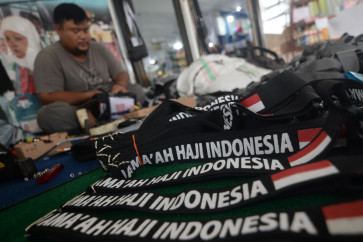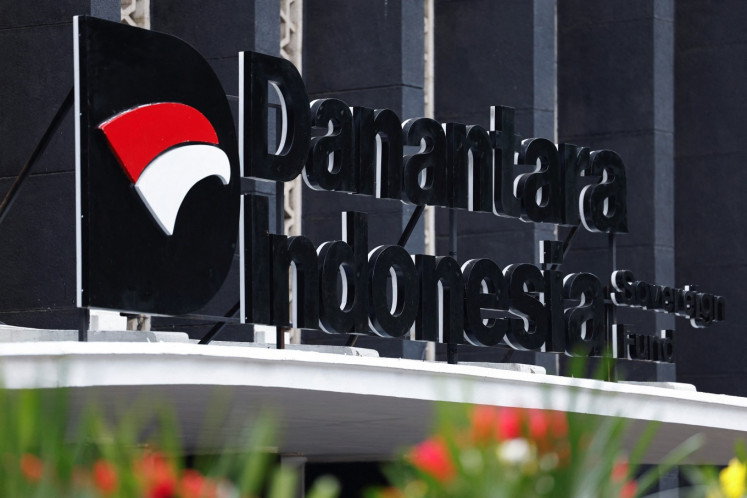Nickel downstreaming and the myth of inclusive growth
The GICs for the country's provincial nickel ore hubs show uneven wealth growth in the local populations.
Change text size
Gift Premium Articles
to Anyone

F
or four consecutive quarters, from the fourth quarter of 2021 to the third quarter of 2022, North Maluku has topped economic growth among the country’s provinces. During these quarters, the province recorded respective year-on-year growth of 21 percent, 28.33 percent, 27.75 percent and 24.85 percent.
This remarkable feat was met with skepticism by the North Maluku governor, who noted that, unfortunately, this considerable growth was not shared among the local population.
The province of Central Sulawesi has also experienced impressive economic growth, consistently growing at a rate of over 10 percent since the second quarter of 2021.
Evidently, these two provinces are the nation’s epicenters of downstream ventures for nickel.
Ever since the government banned exports of nickel ore in early 2020, foreign direct investment (FDI) into the country, particularly in the base metals industry, has surged precipitously. Data from the Investment Coordinating Board (BKPM) reveal that 55.96 percent of FDI in the country’s base metals industry since 2010 occurred in the two years between 2020 and 2022.
Of the US$23.68 billion in FDI in the base metals industry in 2020-2022, $17.38 billion, or 73.39 percent, went to Central Sulawesi and North Maluku. Remarkably, 90.22 percent of this $17.38 billion was concentrated in just three regencies: Morowali regency in Central Sulawesi and the regencies of South Halmahera and Central Halmahera in North Maluku.
In addition to the influx of foreign capital, exports of nickel derivatives have been a primary impetus for the high economic growth in the two provinces.
Exportation of nickel has been upgraded to a value-added product, thus causing the value of nickel exports to soar. According to figures from Statistics Indonesia, ferronickel exports during the period spanning January to November 2022 reached a staggering $12.31 billion.
Nevertheless, the population may not necessarily enjoy this considerable growth. The Institute for Demographic and Poverty Studies (IDEAS) has attempted to ascertain whether this growth is inclusive or exclusive by creating growth incidence curves for the three regencies.
A growth incidence curve (GIC) is able to capture the progression in annual per capita expenditure for each percentile of economic class between two intervals. Using data from the National Socioeconomic Survey (SUSENAS) from March 2019 to 2022, IDEAS detected an alarming pattern.
The GIC for Central Halmahera regency displayed a Loch Ness Monster pattern, which is characterized by a relatively meager increase in per capita expenditure in the lowest percentile, followed by a gradual rise in the middle-income group. However, like the Loch Ness Monster with its long neck, growth in per capita spending in the highest percentile ballooned dramatically.
From 2019 to 2022, the poorest 0-20 percentile group in Central Halmahera experienced average cumulative growth of 5.20 percent in per capita expenditure, while the middle-income group saw average growth of 16.66 percent. In contrast however, the wealthiest percentile achieved impressive growth of 28.33 percent.
The GIC for South Halmahera exhibited the Elephant Curve, a pattern popularized in 2013 by Christoph Lakner and Branko Milanovic referred to as the Lakner-Milanovic graph. This graph shows moderate growth in the low-income group, followed by a steady rise along with the economic group to the middle-income group, culminating in a dramatic upsurge among the affluent, which is typically represented by the uplifted trunk of an elephant. Notwithstanding, the Elephant Curve in South Halmahera does not feature a raised trunk but one pointing down, deviating slightly from the standard.
A pattern in which the high-income group does not experience dramatic growth is seen in the GIC for Morowali regency. However, the pattern in Morowali is far more concerning, as it shows a massive and significant decline in growth in the middle-income group.
Apart from the growth decline in the wealthiest class, this pattern is analogous to the shape of the Nike logo, showing slight growth in the poorest group followed by a diminishing growth rate in the middle-income group, and then a dramatic return to growth in the upper middle income group.
On revisiting the case of the wealthiest groups in South Halmahera and Morowali, it appears that their negative spending growth is not necessarily indicative of a decline in their welfare, but could instead show a rise in savings. It is not necessarily the case that an increase in wealth among the wealthiest groups is always accompanied by an increase in spending.
Data from Bank Indonesia attest to this hypothesis, indicating a substantial rise in deposits to savings accounts in Morowali. In 2017, the regency accounted for just 3.8 percent of total savings deposits in Central Sulawesi, amounting to Rp 750 billion of total deposits reaching Rp 19.61 trillion. By 2021, the figure had risen to Rp 8.45 trillion, or 14.34 percent of the Rp 33.82 trillion in total savings deposits made in the province.
Morowali regency was solely responsible for the 48.21 percent growth in savings deposits in Central Sulawesi in 2020-2021, while savings deposits with a nominal value of Rp 5 billion and above grew 77.64 percent over the same period. This pattern is also seen in South Halmahera regency.
Furthermore, the data on savings deposits gives rise to another conjecture: that disparities in wealth growth might have occurred not only in the regency, but also between regencies.
The evidence confirms that the country’s ambition to attain inclusive prosperity through its nickel downstream efforts is but an illusion. IDEAS understands that reindustrialization through manufacturing commodities downstream is a crucial component of propelling the national economy. Moreover, Indonesia has endured premature deindustrialization since the dawn of the new millennium.
Reversing deindustrialization into reindustrialization is of paramount importance: Indonesia must strive toward not becoming old prior to becoming rich. Nevertheless, all Indonesians must be invited to become rich together, and this aspiration should not exclude the poor.
--
The writer is an economist at the Institute for Demographic and Poverty Studies (IDEAS), a nonprofit public policy research institution. The views presented in this article are personal.









